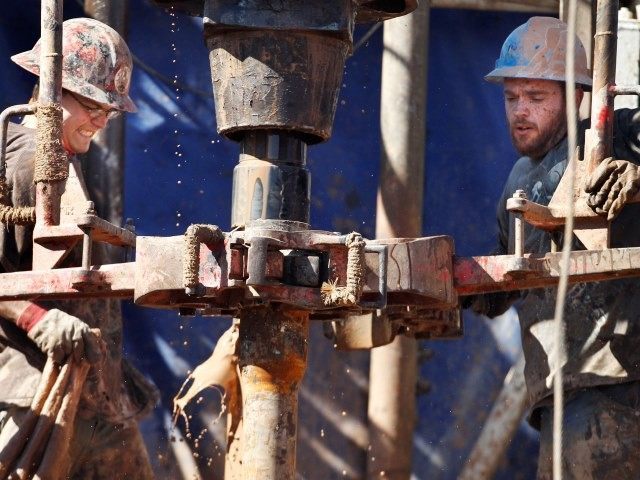Reaction to President Joe Biden’s announcement on Tuesday that he is releasing some 50 million barrels from the Strategic Petroleum Reserve has been swift and critics agree that the move is only a temporary fix and won’t reduce the ongoing rise of gas prices at the pump.
That will require Biden reversing his policies that have hampered domestic production, including reopening shuttered pipelines and trying to ban oil and gas operations on federal lands.
According to the federal Energy Information Administration:
In 2020, the United States consumed an average of about 18.19 million barrels of petroleum per day, or a total of about 6.66 billion barrels of petroleum. This was the lowest level of annual consumption since 1995. The drop in consumption in 2020 from 2019 was the largest recorded annual decline in U.S. petroleum demand. The decrease was largely the result of the global response to the coronavirus (COVID-19) pandemic.
“The administration is blaming others when it ought to take a sober look at its own energy policy,” Derrick Morgan, vice president of American Fuel & Petrochemical Manufacturers, a trade organization, said in a Reason magazine piece. “Prices are determined by competitive firms operating in an environment of supply and demand.” He went on:
Unfortunately federal policy is discouraging supply by shutting down pipelines, putting future production off limits, talking down the future of the petroleum business, and imposing expensive requirements on refineries, chief among them a burdensome Renewable Fuel Standard.
“America’s real strategic petroleum reserve is in places like the Permian Basin and the Gulf of Mexico. The Department of Energy’s reserve should only be used for supply disruptions,” Christopher Guith, senior vice president of the Chamber of Commerce’s Global Energy Institute, said in a statement on Tuesday, adding:
Instead of ineffectual band aids, the White House should focus on policies that will encourage domestic production of oil and natural gas. Rather, all the Administration has done is threaten energy production on federal lands, cancel pipelines and beg Saudi Arabia and Russia for more oil.
“It’s time to unleash America’s full potential to meet the world’s energy needs.”
“Congress gave the president and secretary of energy broad authority to manage the SPR and it’s the administration’s responsibility to exercise that authority as they see fit,” said Frank Macchiarola, senior vice president of policy, economics and regulatory affairs at the trade group the American Petroleum Institute.
“We believe that any impact resulting from an SPR release is likely to be short-lived unless it is paired with policy measures that encourage the production of American energy resources,” Macchiarola said.
Reason Magazine reported on the pushback:
The Biden administration cancelled approval of the Keystone oil pipeline earlier this year and may or may not be considering shutting down the important Line 5 pipeline in Michigan. In January, the Biden administration froze the issuing of new leases for oil and gas drilling on federal lands and waters, but has since backed off and begun permitting new oil and gas exploration. Worried about man-made climate change, Biden has certainly been “talking down” fossil fuels such as oil and gas. The renewable fuel standard adopted in 2005 requires refiners to blend in ethanol to their gasoline and that boosts the average price of a gallon of gasoline by as much as 30 cents. Both the Trump and Biden administrations—in thrall to midwestern biofuel states—strongly supported the renewable fuel standard.
Just before the pandemic hit in March 2020, the U.S. had become, due to the fracking revolution, the world’s largest producer of petroleum, going from an importer of nearly 13 million barrels per day in 2005 to exporting around 1 million barrels daily in 2020. Thus did U.S. oil companies during the past few years basically become the price setters for the global oil market. However, the initial economic fallout of the pandemic caused oil prices to collapse and the number of U.S. oil rigs operating consequently fell to just 250, the lowest level ever.
To make matters worse, the slow recovery of oil production in the U.S. has allowed two loathsome regimes, one that chops up journalists and another that poisons dissidents, to effectively set the current world price of petroleum. However, the pricing power wielded by OPEC+ may not last too much longer since the good news is that the number of oil rigs drilling in the U.S. is rising and reached 563 this past week.
Fox News reported on how the energy landscape has changed since Biden replaced former President Donald Trump:
In March 2020, under the Trump administration and at the onset of the coronavirus pandemic, the Department of Energy purchased 77 million barrels of American-made crude oil to begin to fill the Strategic Petroleum Reserve.
And in April 2020, when oil prices sat deep in the red for the first time in history, Trump again moved to fill up the Strategic Petroleum Reserve.
“Based on the record low price of oil, it is at a level that is very interesting to a lot of people, we’re filling up our national petroleum reserves, strategic reserves and we are looking to put as much as 75 million barrels into the reserves themselves that would top it out, that would be the first time in a long time it’s been topped out and we’d get it at the right price,” Trump said at the time.
Fox News reported that, according to the Department of Energy, as of Nov.19 there are 604.5 million barrels in the Strategic Petroleum Reserve.
Follow Penny Starr on Twitter

COMMENTS
Please let us know if you're having issues with commenting.